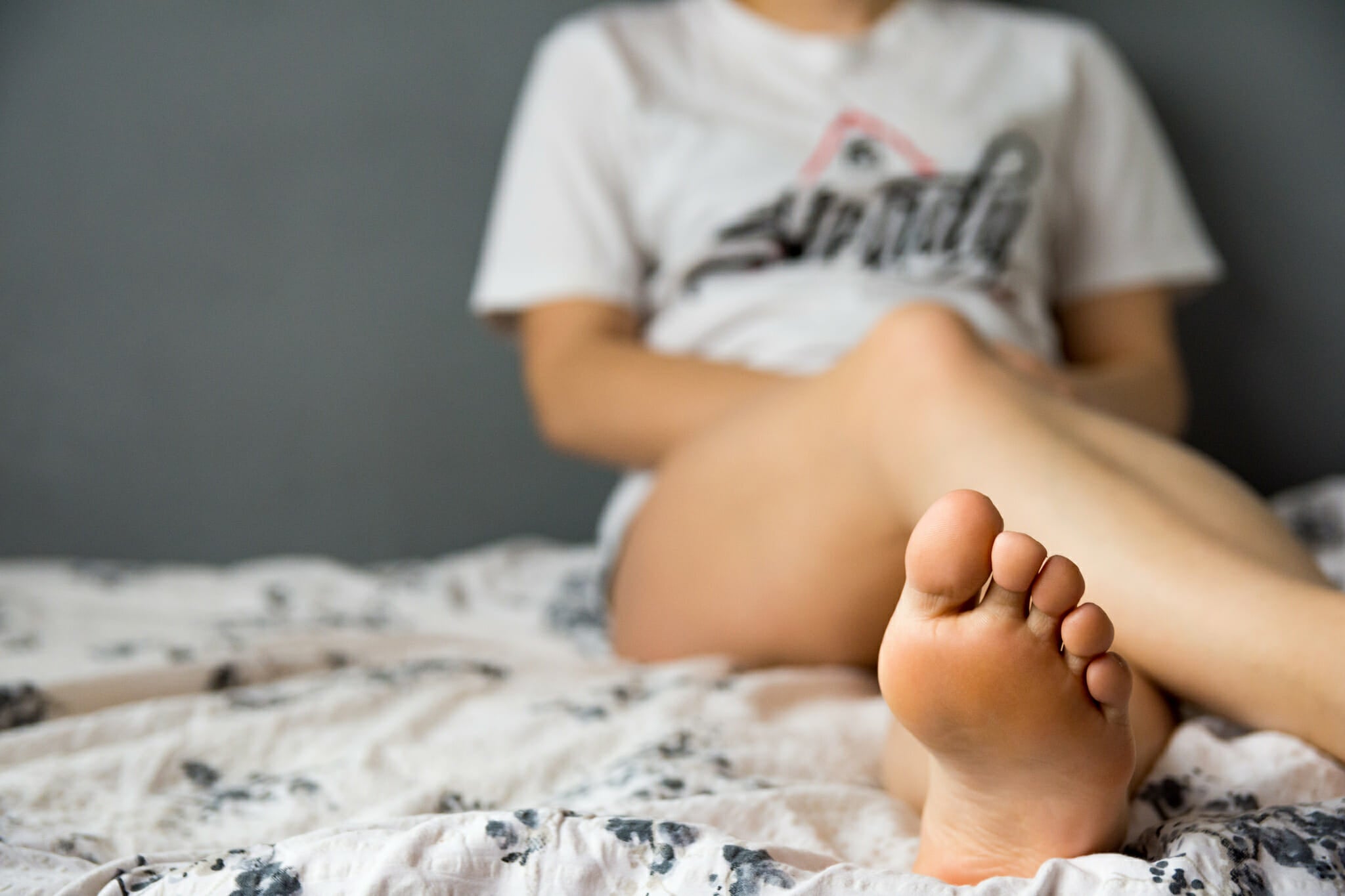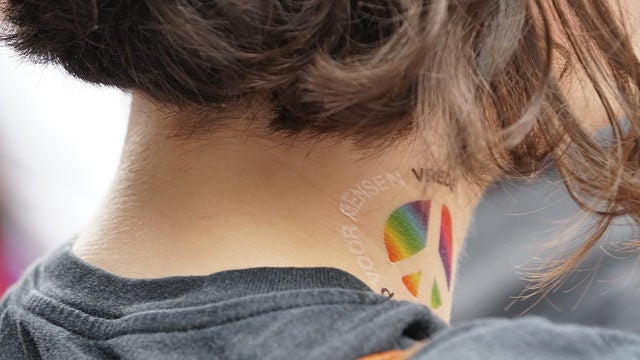Trans/Sex is a column about trans peoples’ relationships with love, sex, and their bodies. Have a topic suggestion? Contact Ana Valens at ana.wythe@gmail.com or @SpaceDoctorPhD on Twitter.
. . .
Nearly three years ago, I started hormone replacement therapy (HRT). I had scripts for estradiol and spironolactone, an estrogen steroid and antiandrogen. It’s funny thinking back on those early days. I was so worried my eyesight would change, I’d get blood clots, or I’d go completely sterile. So far, at least two out of those three haven’t happened yet (the court’s still out on the third), but a lot certainly has changed along the way.
The very first thing I noticed was my face. I woke up one morning and realized my cheeks felt soft to the touch. My hands turned smooth, too. After just a few weeks, I started growing breast tissue on my chest. One thing after another followed over the next few months: My hips turned rounder and chubbier, my muscles on my arms began to vanish, my body hair lessened until the whiskers on my stomach and legs looked white and thin, and I started getting a (white girl’s) ass for the first time in my life. By six months in, it was getting pretty hard to hide how much I changed. But those weren’t the only noticeable differences on hormones.
My sex life was changing, too.

Before I started estradiol and spironolactone, my libido was embarrassingly high. A cocktail of college stress, anxiety, gender dysphoria, and plain old depression made me stupidly horny, and sex constantly hummed in the back of my head like an idling engine. A few minutes tending to my business in the bathroom or lying in bed alone was a release valve from the world around me, even though the act of reaching an orgasm was pretty uncomfortable. I strived to get to the destination but hated the journey.
Then I started HRT, and all of that changed. Gradually, sexual desire went from a need for release to a gentle and soothing wave with its ups and downs. Sex was no longer about reaching a climax, it was about the experience of being sexual: Embracing my new body, stimulating it, taking on new roles like being a top or bottom, and enjoying the experience of being a queer woman attracted to queer women. I started having good sex for the first time in my life, and I no longer felt the need to pleasure myself every day, or every week for that matter.
It wasn’t just my libido that changed. Sexual stimulation felt different on HRT. My back, shoulders, stomach, and thighs all became much more sensitive. Stimulation from being touched or felt up became much more intense too, sometimes even overwhelming. I didn’t just feel better about my sexuality, I also experienced it in a new way, a much more feminine and affirming way. I really felt like estrogen gave me a new body to play with, and I was so happy to try it out.
Most interesting to me as a non-op trans woman—that is, someone who outright refuses to undergo sex reassignment surgery—HRT changed how my genitals work. My orgasms became more drawn out and intense, like a full-body experience. My physical preference for sexual stimulation changed too, and I realized there was a world beyond gripping myself like a baseball bat. Stroking and fingering became much more pleasurable than up-and-down tugging motions.
I’m a big fan of Allison Moon’s Girl Sex 101, and as she puts it, a trans woman’s clit—a gender-affirming term for penis—is analogous to a cis woman’s clitoris and has myriad ways to be touched and played with that are soft, gentle, and feminine. Many of these include stimulating the perineum, or the region between the testes and anus, to reach the internal clitoral structure.
“The most important thing to know about using your hands on [a] trans clit is to treat it like you would a cis clit,” Moon writes. “Whether it’s hormones or dysphoria or a mixture of both, or neither, it generally feels better to approach her goods like you would approach any girl’s goods: with respect, curiosity, and a focus on her specific pleasure.”

I’m no stranger to the idea that HRT brings about genital changes. But I wasn’t sure why HRT changed the way my body, emotions, and sexuality work, just that it did. So I decided to talk to a medical expert who could provide some insight.
Dr. Fiona Bisshop is a primary care physician and serves as the vice president of the Sexual Health Society of Queensland, Australia. She explained to me that feminizing hormones produce physical changes to the genitals over time, which range from testes decreasing size to weakened erections.
“The testes tend to slowly shrink, and without circulating testosterone, the genitals can lose some of their sensitivity. People often describe becoming less aware of them in general,” Dr. Bisshop told me. “Of course libido also drops, but this is quite a variable phenomenon, and many people are able to tweak their HRT so as to be able to retain some sex drive and function. Erections are still possible despite low T, although some may need a little help from sildenafil,” such as Viagra.
Alongside HRT’s changes to trans women’s genitalia, hormones also have “profound” effects on the brain. Dr. Bisshop believes brain changes and a lack of DHT (dihydrotestosterone, a derivative of testosterone) receptor stimulation may lead to changes in orgasms and erogenous zones, and she stresses both testosterone and estrogen play a role in trans women’s sexuality, not just the latter.
“We know from PET scans that sex hormones affect both the size and function of different parts of the brain, including the hypothalamus (which is involved in emotional response and sex drive) and the language areas of the brain,” Dr. Bisshop told me. “We know that men and women can experience sexual attraction and intimacy quite differently, and for women, there may be a greater emotional component to attraction and sexual pleasure, and that this occurs within the context of female levels of circulating testosterone (in other words, it’s not all about how much T you have!).”

READ MORE
- Trans/Sex: Hookup apps are exhausting, especially if you’re a queer trans woman
- How big is the transgender population, really?
- What is pansexuality? A queer woman opens up about her sexuality
As I’ve continued to think about my body and the changes that it’s experienced over the past three years, I realized that all of my sexual education knowledge is self-taught. I never learned about trans sexuality as a high schooler in sex education. In fact, growing up in suburban New Jersey, I didn’t even realize trans people existed until I was a senior. Since then, a lot of the information I learned about HRT’s sexual changes came from asking other trans women, googling things on the internet, or having sex in a strange, new, “oh my gosh, that hand can do that?” kind of way.
Don’t get me wrong, I loved figuring things out step by step, exploring my body and learning more about it with every new sexual encounter—this is sadly how most kids, especially women, learn about sexual pleasure. But I also wished there were people and resources available to talk to about my transness and sexuality.
It wasn’t until somewhat recently that books like Girl Sex 101 and Trans Bodies, Trans Selves started teaching trans women more about their private parts. In fact, I’m one of the lucky trans women who can simply pick up a book and start learning about words like “frenulum” and “corpus spongiosum.” Trans women who transitioned years before me had to rely even more so on their local trans communities or the internet just to know more about their bodies.
“Despite many advances in societal attitudes, sex is still a topic that people have difficulty discussing,” Dr. Bisshop said to me. “I mean, we still have arguments over what constitutes acceptable sex education in schools, so it’s no wonder that trans sex is still a taboo topic for many people, including doctors.”
Starting estrogen was an incredibly exciting experience for me, one that led me to rediscover and cherish my sexuality. That’s a part of trans womanhood that trans women should be proud of. But I want to live in a world where I can proudly and openly talk about my body as a normal part of human sexual experiences, and bringing these conversations out into the open is a good start.


